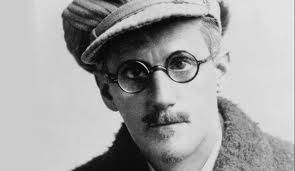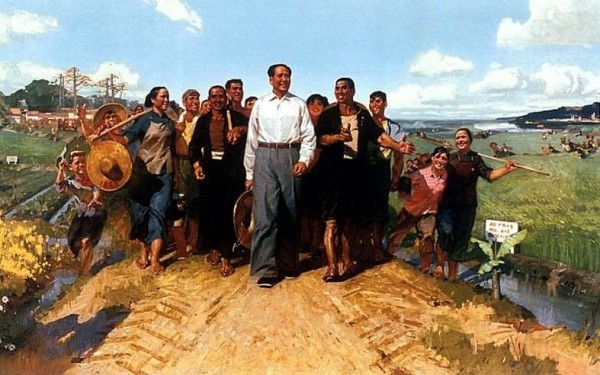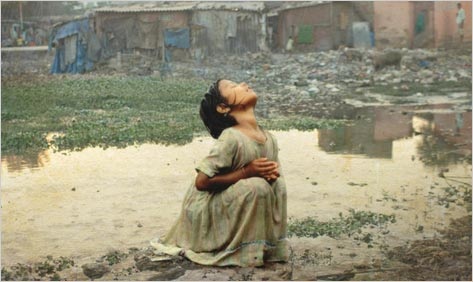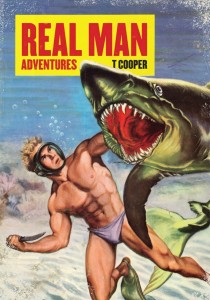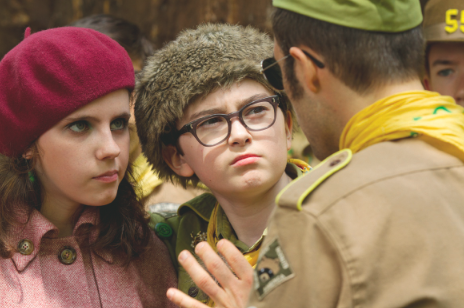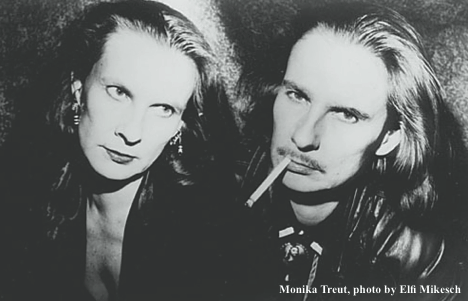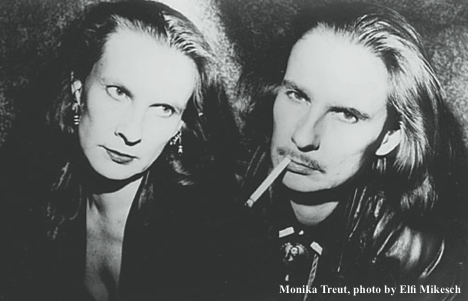Record Collectors Preserve The Past ■ by Dan Melnick
They’re leftovers, clutter that needs to be dealt with. Vinyl records sit in the basement on dusty shelves waiting to be unloaded at the next yard sale. It’s been years, in some cases, since they’ve been removed from their sleeves. But for passionate music lovers and collectors, the hisses and pops embedded in the grooves of the vinyl sound better than the polished digital tracks produced today. Many of these collectors amass vast museums of vinyl comprised of thousands of disks. More than a hobby, record collecting is a livelihood that defines who they are.
With purchases these days just an Amazon or eBay click away, one of the vast appeals of record collecting is in the thrill of the hunt. Whether one seeks records, comic books, or even ceramic figurines, half of the fun is in assembling the collection. “I don’t do anything online,” vinyl collector Jonathan Richardson says. “It seems like cheating. It defeats the purpose. Almost 100% of my collection is from me scavenging yard sales and thrift stores. I normally do not pay more than a dollar for a record. I would much rather be digging through dusty bins in an antique mall. That’s the fun part of it, going out and finding these little treasures.” Richardson owns anywhere from 10 to 12 thousand records and his collection is valued at over $100,000. That’s a lot work and a lot of antique malls.

Jonathan Richardson
■
The hobby of collecting vinyl records has been around since their inception in the fifties, but the concept of assembling a collection, as opposed to simply buying records for their music value, didn’t take off until the mid-eighties and the birth of the CD. That’s when most replaced their collections with the new media form and the easier to store compact disk. But while many embraced the new technology, there were still those who would always be attracted to the vinyl medium. Records weren’t the first way to record music and they certainly aren’t the last, but there’s something about this format that many still find intriguing.
People collect whatever speaks to them, but when it comes to music, vinyl collectors stand out from the crowd. There’s a certain mystique and air of knowledge that surrounds the record collector that’s missing from other musical hobbyists. Collecting 8-track tapes for instance, just doesn’t have the same allure, same inherent coolness, about it that record collecting does. Record collecting has developed into somewhat of a loaded term these days thanks to many music gurus and true hipsters who have inadvertently left their knowledgeable mark on the discipline over the years. Putting together a discerning, comprehensive library is careful and painstaking work. So, what is it about vinyl that continues to attract both listeners and collectors to what would be an otherwise dead medium?
“For me it was always about the music. It’s not about the material that it’s made from,” says Ron Resur, an avid record collector of the past 60 years. Resur has been adding to his collection since records were first invented, taking great pride in discovering rare records. Sometimes, these can be popular albums of famous musicians. Resur’s most prized pieces however are records that most people may have never heard of: the remains of limited print runs and masterpieces of forgotten artists. He spent almost forty years looking for Dino Valenti’s self-titled album, having to settle for a CD until his son presented him with an original vinyl copy as a Christmas present. Finding these “little treasures,” as Richardson describes them, isn’t just about increasing the number of records one owns, it’s about adding another piece to the puzzle in a never ending quest to explore the past. Each record collection is a carefully chosen tapestry of musicians, put together disk by disk. Record collectors aren’t just hobbyists, they’re historians. “I wouldn’t call myself a record collector as much as a music lover,” says Richardson. “I’m really fascinated with recorded music and the amount of cool, interesting stuff that’s out there that hasn’t been heard by the general public.”

Ron Resur
■
Ron Resur calls this practice “audio archeology.” Over the past 60 years, he’s diligently cataloged his collection of over 800 artists and arranged the records for easy reference complete with music chronology and printed biographies of the artists. “I find it fascinating,” Resur says. “It’s really keeping a record on social mores through the music. What is the attitude of society at the time?” Like any work of art, the recorded music of any time period reflects the social issues and cultural trends relative to that era.
Resur’s point of view is shared by many avid vinyl collectors. Each record they find is an artifact of another age. “I like sincerity,” Resur says. In regard to music, “the rawer it is, the closer it is to the initial expression it is, the better. The purity of the idea coming through in the music is what I look for. I listen to the content more than anything. And that doesn’t necessarily have to be the words. It’s the way the person expresses himself through the instrumentation of the music and through the writing of the music.” He uses Neil Young as an example, explaining that not only is he a great musician, but “he has an intensity and a specific philosophical point of view that I have an affinity with.”
While Bloomington may boast only a half a dozen of serious collectors, each person has his own version of the Holy Grail. Like Richardson says, they’re “music lovers” interested in lost artifacts, not financial gain. Much like Resur’s Dino Valenti quest, these obscure objects of desire hold a personal connection with the collector; what makes them valuable is the record’s genuine rarity. If you collect long enough, you’re bound to find what you’re looking for. “The record that I have been searching for my whole life is the next one that I have never heard of that I find,” Richardson says.
In terms of vinyl collecting and records in general, it’s impossible not to talk about the actual medium or mechanism by which the music is experienced, the delivery system if you will.
While being a potential thorn in the side of music completionists, the modern delivery format favors individual songs as opposed to entire albums. Artists still record entire albums of music, but unless you’re a big fan of the artist, most of us only hear a hit single or two. Ten years ago, this single would attract a buyer to a music store and if the person wanted to own the music, he or she would have to purchase the entire CD. But now with mp3 files and iTunes, consumers can cherry pick their favorites for 99 cents. As the music industry evolves, making content more accessible to consumers, the concept of an entire collection of thematically related songs — an album — is losing its relevance.
Albums used to tell a story, either literally like The Who’s Tommy or Sgt. Pepper’s Lonely Hearts Club Band or figuratively, marking a specific era of the band’s growth. Take the work of any musician or group who’s been around for a long time and compare something they did 10 years ago to something they released last year. Remember when people used to say, “Man that was a good album?” That doesn’t happen anymore. We download, rip, and burn our music, put it on a mobile device and that’s the end of it. Sure, some may still want to listen to an entire album’s worth of music, but for many, they can’t even name what album the newest hit even came from.
Many music collectors like Richardson, trace the deterioration of album oriented music to the invention of the CD. “I think records have a little more permanent feel to them as opposed to a CD,” Richardson says. “You can burn a CD. But you can’t burn a record. It’s solid. It has a life. CDs and mp3s are disposable to me. They all look the same. You rip it and put it on your iPod and throw it away. It doesn’t matter.”
“I’d rather have an album than a CD,” Resur agrees. “With a CD there’s a thing called compression where it’s been remastered to take off the high end and the low end and you’re not getting the original sound. You’re getting part of it. It might be cleaner, but you’re only getting part of the original intent. And I want to hear what the artist intended, not what some engineer thought sounded better.” This is also an issue with all digital music, not just the CD. Digital media platforms may make music more ubiquitous, but only those recordings that companies have uploaded to their libraries and deem marketable.
These are complaints that most vinyl collectors share about modern music. As lovers of the art form, the more removed they get from the original sound, in this case, by the intervening technologies, the less they like it. It would be like a museum curator cleaning up the colors on a Picasso because he thought the blue wasn’t bright enough. The key distinction here is what Resur refers to as “intent.” Some artists can only record with modern technology. You couldn’t make electronica or dub step music without a computer. Other artists happen to like layered vocals and autotuning. Collectors like Richardson and Resur are fine with all of these methods as long as they meet the artist’s original intent for the music, as long as the recorded product is faithful to the authenticity of the music creative integrity of the artist.
Indiana has a rich musical history. Vinyl collector and music enthusiast Rick Wilkerson runs a website in which he has compiled a massive database of as many Indiana artists and their records that he can find. We all know that John Mellencamp is a Hoosier. But there are others. Wes Montgomery was born in Indianapolis. Michael Jackson, the King of Pop was a native of Gary. Axel Rose is from LaFayette. Van Halen’s David Lee Roth and of course, Hoagy Charmichael, are from Bloomington. Their work alone makes quite the record collection.
Wilkerson co-owned the record store Irvington Vintage on Indianapolis’s east side for 15 years and is no stranger to audio archeology. His newest project takes his collection up a notch as he seeks to chronicle Indiana’s vinyl history. Most of his research is secondary as he scours various books and websites confirming the origins of many artists and their music. “If I started this before the internet, this would have been a nightmare,” he says. Wilkerson’s project grew out of his personal record collection and like Richardson and Resur, he feels that there are still lessons to be learned from the past. If anything, his website chronicles a shared history with Hoosiers and other popular artists, bridging the distance between the two. Ultimately, his plan is to write a book. “The website that’s up there now is not even close to approximating what I’ve got,” he says.
Wilkerson will list popular artists and expensive work on his website because they have a connection to the state of Indiana, but he’s much more interested in finding those “little treasures” that others don’t know about, excavating forgotten or unheard of vinyl for others to experience. As many collectors like Richardson and Resur agree, the art and motivation behind an impressive collection is to provide others with a taste of something they may not have heard before. So often, the best records, aren’t always the most popular ones, but the least popular.
With the format and delivery method of music changing numerous times of the years, what is it about LPs and 45s that still has hobbyists coming back for more? Few records are made anymore, and only then largely for novelty’s sake, yet the medium is attractive enough for some to spend thousands of dollars on a rare find. The initial pressing of The Freewheelin’Bob Dylan and Velvet Underground and Nico’s Acetate haves sold for $25,000 to $35,000.
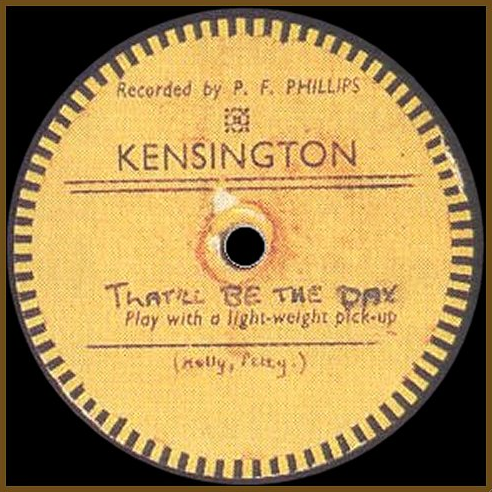
The Quarrymen (John, Paul, and George pre-Ringo) — “That’ll Be the Day”/”In Spite Of All The Danger” (UK 78 RPM, Acetate in plain sleeve, 1958) Note: Only one copy made, owned by Paul McCartney. Value: $200,000
■
As auditory historians, delving into the past for music unheard of today has tremendous appeal for Resur. We still have record parties,” he says. “Some of the folks here in town, we get together and everybody brings their own stuff. You get so many different points of view and of course you might hear something you hadn’t heard before. I like to play things that the other people in the group maybe haven’t heard because I’m so much older than everybody else.
“I’m 70 years old. I’ve been listening to some of these records for a long time. It’s interesting to me to listen to something today that I originally listened to in 1958. You hear something so many times that it’s ingrained in your memory; you don’t listen to it for a while and when you listen to it again, it sounds totally different. It’s a way of relating to the past and gaining a new perspective because the sound hasn’t changed, I have.”
Resur referred to the records as points of view, but he might as well have used the phrase “social mores.” That’s really the root of it. Each record is a fragment of a lost history. Many of the artists have long-since died, their voices forever recorded in the grooves of spinning vinyl. What’s left behind is a legacy for future generations. And it is thanks to the efforts of audio archeologists like Richardson, Resur, and Wilkerson, sifting through a hodgepodge of crates and boxes in haphazard flea markets and rummage sales, that their legacy is preserved for future generations.
■
The Ryder, January 2013
[P1]The hobby of collecting has been around since the 50s but the concept of collecting took off in the 80s. Since the hobby waw around in the 50s, wasn’t the concept around in the 50s?
[MD2]You had these two highlighted. I know they’re awkward, but this is a direct quote. Should I edit them down anyway?
[P3]I’ve added the word recordings. But a larger issue is how does this differ from pre-digital, pre- mp3s? Haven’t music co execs always based their decisions of what to release based on the artist’s marketability?






